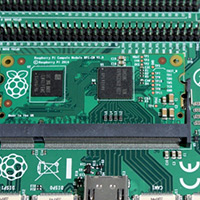

The Importance and Applications of Tempered Glass
Tempered glass, also known as toughened glass, has become an essential material in various industries due to its unique properties and benefits. Processed through controlled thermal or chemical treatments, tempered glass can withstand higher stress and temperature variations than regular glass, making it a safer and more durable option for numerous applications.
The manufacturing process of tempered glass involves heating standard glass to over 600 degrees Celsius and then rapidly cooling it. This intense thermal treatment strengthens the glass, enabling it to endure impacts and heavy loads. As a result, tempered glass is significantly more resistant to breakage compared to its untreated counterpart. It can typically resist thermal stresses up to five times greater than standard glass, which is crucial in environments subject to extreme temperature fluctuations, such as buildings with large glass facades or in automotive applications.
The Importance and Applications of Tempered Glass
The versatility of tempered glass extends to various architectural and design applications. It is frequently used in commercial and residential buildings for facades, windows, and balustrades. The aesthetic quality of tempered glass also enhances modern architecture, allowing for expansive open spaces filled with natural light while maintaining structural integrity. Architects and designers appreciate tempered glass for its ability to combine style with safety and strength.

In the automotive industry, tempered glass is commonly used for side and rear windows. The high resistance to thermal and mechanical stress makes it suitable for vehicles exposed to varying weather conditions and the everyday wear and tear from road use. By incorporating tempered glass, manufacturers can enhance the safety of vehicles, ensuring that glass breakage does not lead to dangerous situations for passengers.
Another area where tempered glass shines is in the realm of consumer electronics. Screens of smartphones, tablets, and laptops often incorporate tempered glass, providing protection against scratches and impacts. The use of this robust material extends the lifespan of electronic devices, meeting consumer demand for durability alongside advanced technology.
In industrial settings, tempered glass is utilized in applications such as ovens, where it must withstand high temperatures. The ability of tempered glass to handle these conditions without compromising integrity makes it an indispensable component in both residential and commercial cooking equipment.
In conclusion, tempered glass stands out as a remarkable material in safety, durability, and design. Its unique manufacturing process enhances its strength and resistance to breakage, making it suitable for a wide array of applications, including architecture, automotive, consumer electronics, and industrial uses. As technology advances and the demand for safer and more efficient materials increases, the role of tempered glass will undoubtedly expand, solidifying its position as a fundamental material across various industries. Whether enhancing the safety of a shower enclosure or improving the durability of electronic devices, tempered glass continues to demonstrate its importance in modern manufacturing and design.